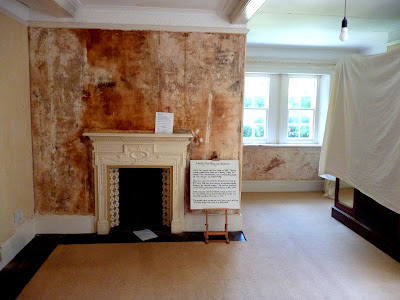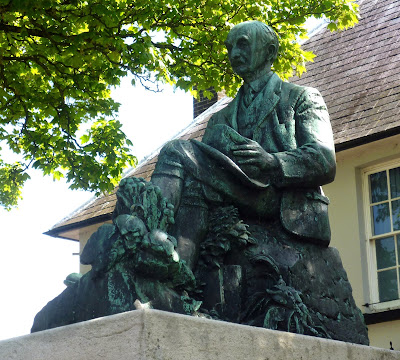It's very useful to have a book such as this – particularly if, like me – you want to find William Barnes's grave and have been given completely the wrong information by a most emphatic member of Dorchester TIC about where to find it. This contains far more information than that though, and for anyone just wanting a potted version of the poet's life and work such a short book is ideal. I found the Dorset dialect words culled from Barnes's Glossary particularly interesting.
William Barnes was born in Sturminster Stowe in Dorset, came from a working-class background and was essentially self-taught, leaving school at thirteen to begin working life as a solicitor's clerk. He moved to Dorchester in 1816, where he continued to work as a clerk and began to educate himself in his spare time.
In 1823 – after publishing two books – he started his own school in Mere, Wiltshire. He returned to Dorchester with his wife and children in 1835, where he opened a school in Durngate Street. Barnes was rector of Winterborne Came from 1862 until his death in 1886 and was buried in the churchyard – not, I repeat – Whitcombe churchyard.
My other William Barnes post:
–––––––––––––––––––––––––––––––––––
William Barnes in Dorchester and Winterborne Came, Dorset
William Barnes was born in Sturminster Stowe in Dorset, came from a working-class background and was essentially self-taught, leaving school at thirteen to begin working life as a solicitor's clerk. He moved to Dorchester in 1816, where he continued to work as a clerk and began to educate himself in his spare time.
In 1823 – after publishing two books – he started his own school in Mere, Wiltshire. He returned to Dorchester with his wife and children in 1835, where he opened a school in Durngate Street. Barnes was rector of Winterborne Came from 1862 until his death in 1886 and was buried in the churchyard – not, I repeat – Whitcombe churchyard.
My other William Barnes post:
–––––––––––––––––––––––––––––––––––
William Barnes in Dorchester and Winterborne Came, Dorset




















































